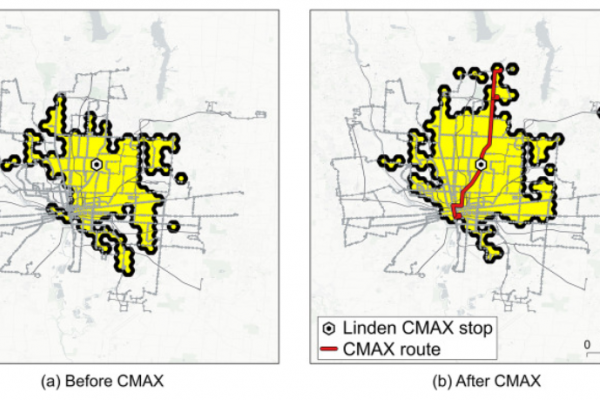Robust accessibility: Measuring accessibility based on travelers' heterogeneous strategies for managing travel time uncertainty

Robust accessibility: Measuring accessibility based on travelers' heterogeneous strategies for managing travel time uncertainty
Authors: Jinhyung Lee and Harvey Miller
Abstract
Uncertainties in travel times due to traffic congestion and delay are risks for drivers and public transit users. To avoid undesired consequences such as losing jobs or missing medical appointments, people can manage the risks of missing on-time arrivals to destinations using different strategies, including leaving earlier to create a safety margin and choosing routes that have more reliable rather than fastest travel times. This research develops a general analytical framework for measuring accessibility considering automobile or public transit travelers' heterogeneous strategies for dealing with travel time uncertainty. To represent different safety margin plans, we use effective travel time (expected time + safety margin), given specified on-time arrival probabilities. Heterogeneity in routing strategy is addressed using different Pareto-optimal routes with two main criteria: faster travel time vs. higher reliability. Based on various safety margin and routing strategy combinations, we examine how accessibility changes under varying safety margin plans and routing strategies. Also, we define and measure robust accessibility: geographic regions that are accessible regardless of the safety margin planning and routing strategy. Robust accessibility can provide a conservative and reasonable view of accessibility under travel time uncertainty. To demonstrate the applicability of the methods, we carry out an empirical study on measuring the impacts of new transit service on healthcare accessibility in a deprived neighborhood in Columbus, Ohio, USA.
Key Information:
- Develop an analytical framework for measuring accessibility considering travelers' heterogeneous safety margin plans and routing strategies under travel time uncertainty.
- Explore how accessibility changes under various safety margin plans and routing strategies.
- Define and measure robust accessibility: geographic areas that are accessible regardless of the safety margin planning and routing strategy.
- Robust accessibility provides a conservative and reasonable view of accessibility under travel time uncertainty.
- Apply our framework to measure the accessibility impacts of new public transit service under travel time uncertainty.
Read the complete article now!
